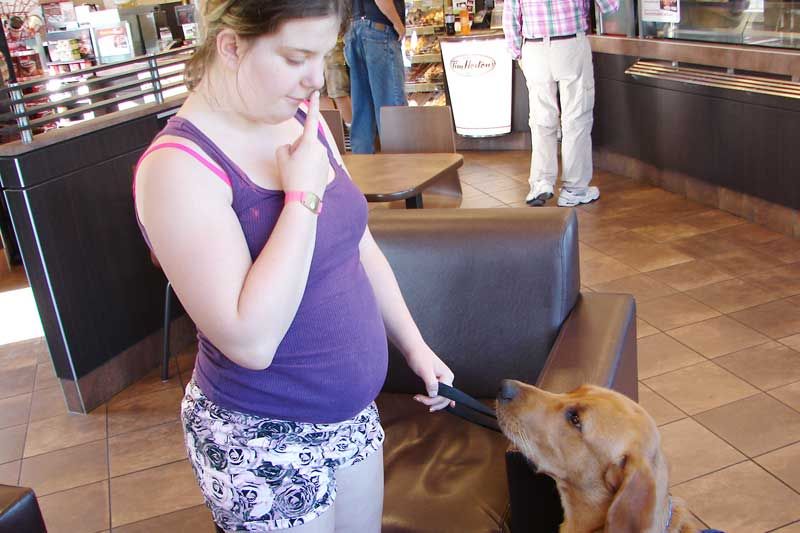Malcolm Callister | Sep 15, 2016
Brittani Lawson, a 21-year-old woman from Verona, and her service dog Anchor met me at Tim Hortons recently. Brittani has a medically diagnosed, non-visible disability and her doctors say that she needs a service dog to allow her to live an independent and normal life. She was forced to take control of the supply and training of her service dog when the non-government independent organizations could not meet her needs.
Medical professionals recognize the value of trained service dogs for people with non-visible disabilities. The matching of a trained service dog to these individuals can save lives, and helps them lead a normal and independent life. The training, accreditation and supply of these animals is left in private hands, with little or no federal or Ontario Provincial Government guidelines.
A service dog team consists of the handler with a medically diagnosed need, and a trained dog. The province of Alberta has come to grips with this need and issues photo ID cards for all individual certified service dog teams. Guidelines for the certification, service dog training, public and business education is available from Assistance Dogs International (ADI), an international not-for-profit organization pooling the resources and experience of many international service dog groups. Ontario does not have to make up the rules.
In the same way that we accept the use of dogs to detect explosives, the concealment of narcotics, or buried avalanche survivors, we must learn to accept that service dogs are needed by many people with different non-visible disabilities. The dogs’ heightened sense of smell detects changes in the scent emitted by people with, for example, insulin deficiency from diabetes, or Post Traumatic Stress Disorder and can alert them to the onset of a seizure and the need for help.
A certified service dog is a well trained, non-aggressive and medically alert animal. Its job is to ensure the safety of its team partner. A service dog is trained with a combination of kindness and rewards for actions. Do not speak to, pat, or feed treats to the dog without the handler’s permission. You will confuse and distract it, and this may have deadly results for the human member of that “service dog team”. When meeting a service dog team, always speak to the handler, not the dog.
A few years ago, when it was suggested that a service dog would help Brittani to live a normal independent life, there were no trained dogs available. Brittani and her family purchased a Labrador puppy named Anchor from a good breeder and started an intensive ADI based owner-training program. Brittani performed the many hours of weekly training, with her family providing the taxi service and long waiting times. Not everyone can have this support, and not every medical need lends itself to owner training. Government support is required.
Having now passed the test as a service dog team, Anchor wears his official service dog vest. Most businesses accept this, but not all. In Ontario, public and business education is required. A service dog team may be challenged for being where dogs are not allowed. Currently the handler must produce a doctor’s letter to confirm that they need the service dog for personal health reasons. They may also have to argue their rights, and that is wrong.
An Ontario photo ID card similar to a driver’s license, as they have in Alberta is required.
More Stories
- Latest CUPW Job Action Stops Postal Delivery Of The Frontenac News Forcing Alternate Plans
- Opponents of Barbers Lake Gravel Pit Pack Ag Hall in McDonalds Corners
- Bobsleigh Olympian Jay Dearborn At Mikes Pizza In Sydenham
- The Loins Club Of and O'Lakes Roar
- North Frontenac Back Roads Studio Tour - September 27 and 28
- Sunday Market Vendors Give Back
- George Street Work As Town Hall Renovation Nears Completion
- One Way Street Plan Hits A Dead End - Central Frontenac Council, September 9
- Global Gardening
- No Winner Yet in Catch The Ace But Fundraising Target Met

